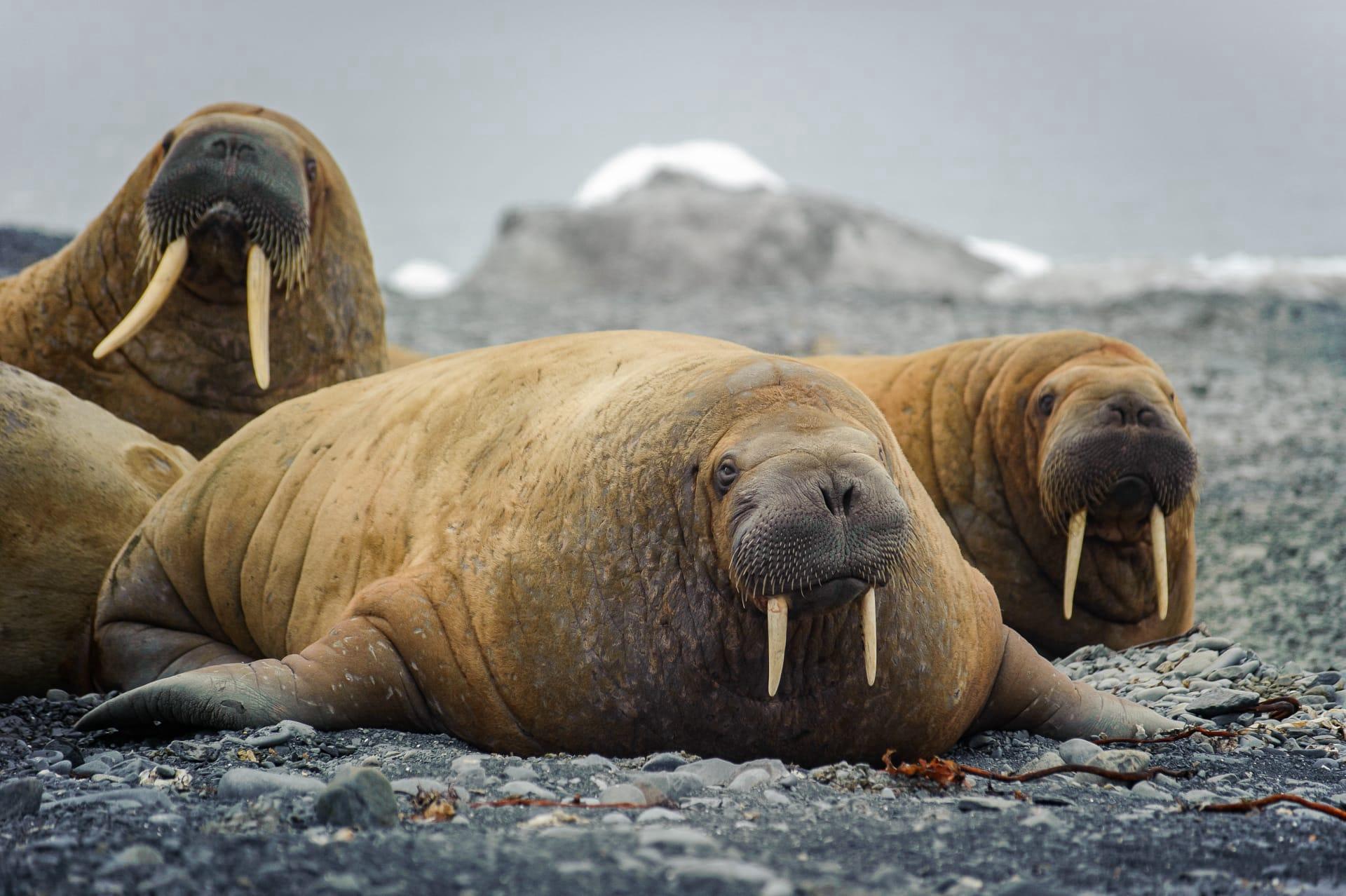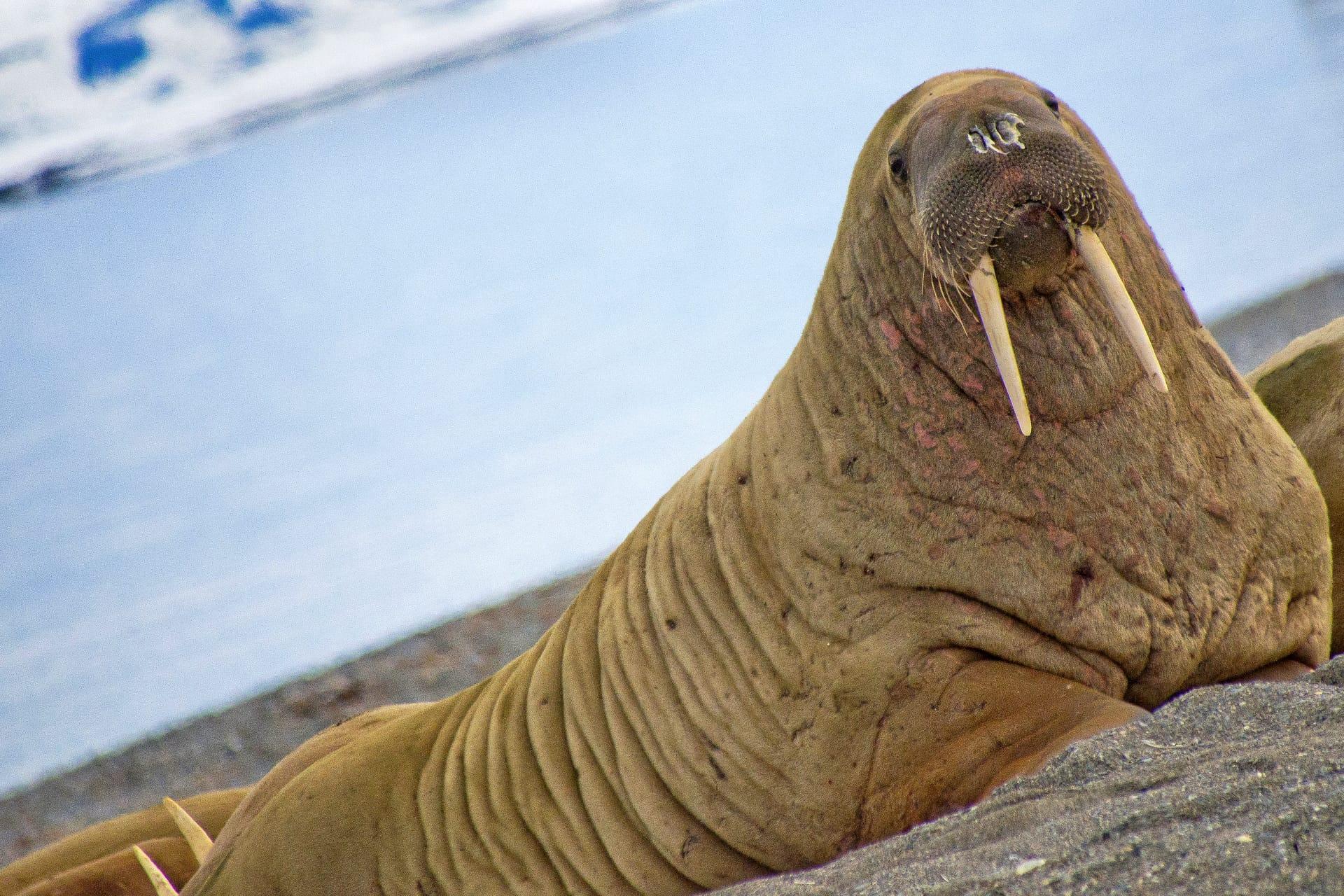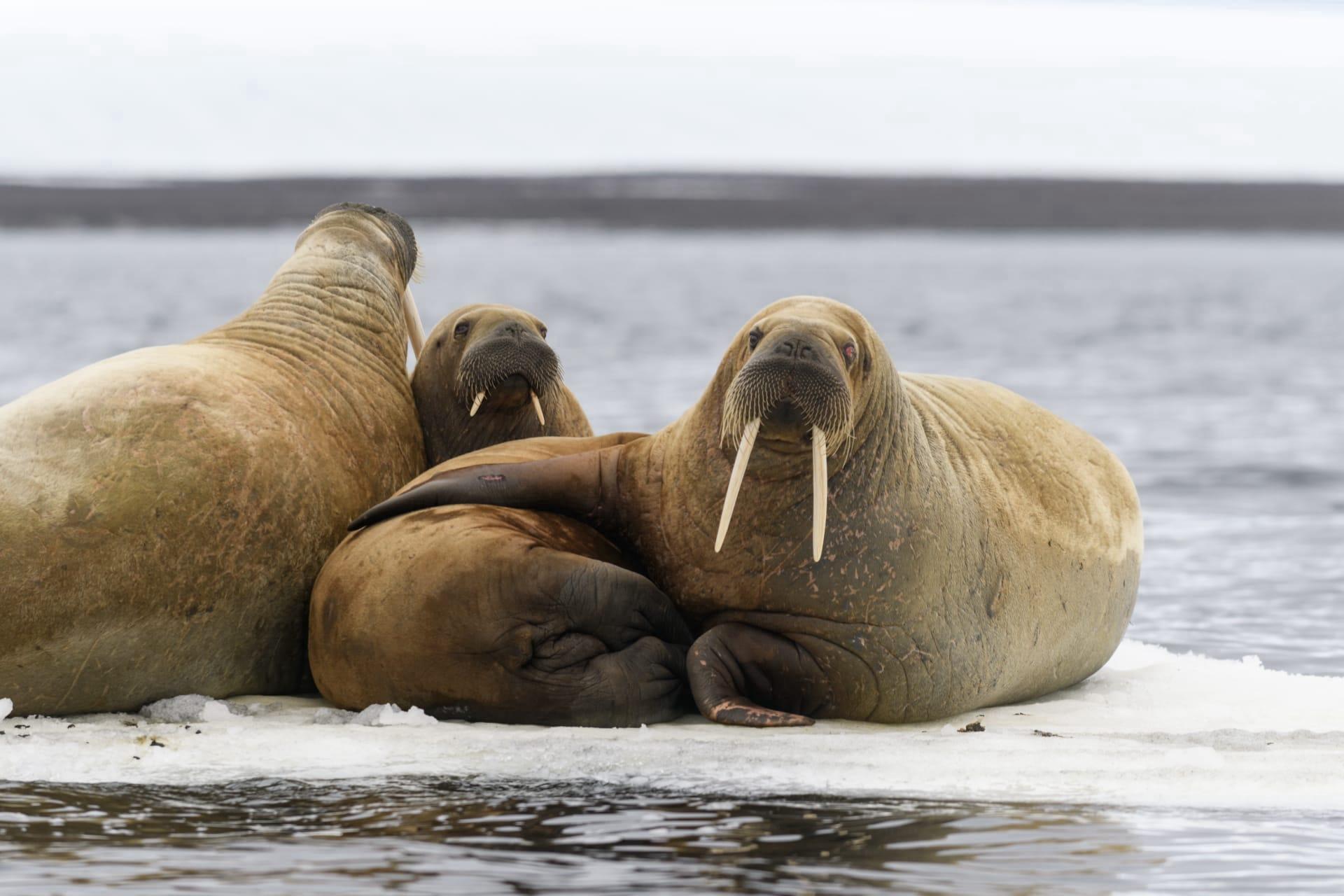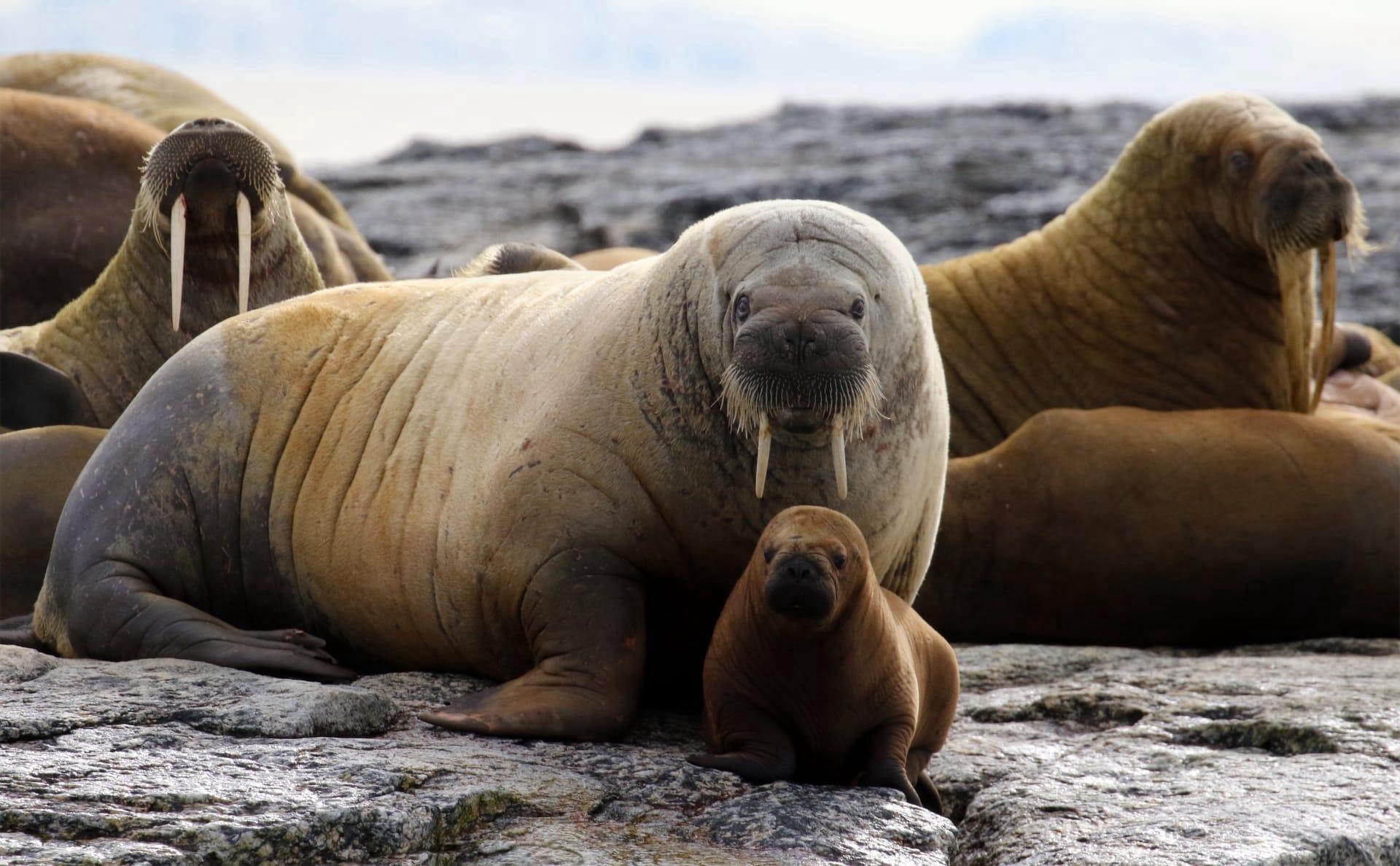Walrus Trivia
- Home /
- Trivia Question /
- Animal /
- Walrus Trivia
1
Question: How long can walruses live in the wild, and what factors influence their lifespan?
Answer: Walruses typically live up to 20-30 years in the wild. Their lifespan is influenced by factors like environmental conditions, availability of food sources, predation threats, and human activities. Notably, the icy habitats they rely on are diminishing due to climate change, impacting their longevity.
Question: What's the size comparison between male and female walruses, and how does this affect their behavior?
Answer: Male walruses can be considerably larger than females, often weighing about 1,700 to 3,700 pounds (770 to 1,700 kilograms) and measuring up to 11.5 feet (3.5 meters) in length. Females typically weigh around 880 to 2,750 pounds (400 to 1,250 kilograms) and are about 7.9 feet (2.4 meters) long. This size difference, known as sexual dimorphism, leads to males being more dominant and territorial during mating seasons.

2
Question: Is it true that walruses use their tusks primarily for combat?
Answer: Contrary to popular belief, walruses use their tusks more for social interactions and to help haul themselves out of water onto ice than for combat. These tusks, which can grow up to 3 feet (1 meter) in length, are also used for protection and for digging into the ice or sea floor for food.
Question: Do walruses eat large marine animals like seals or small fish?
Answer: Another misconception is that walruses primarily feed on large marine animals. In reality, their diet mainly consists of benthic invertebrates, particularly mollusks like clams. They use their sensitive whiskers to detect prey on the sea floor and suck them out of their shells.

3
Question: How do walruses adapt to the extremely cold Arctic temperatures?
Answer: Walruses have several adaptations for the cold Arctic environment. They possess a thick layer of blubber, about 4 to 6 inches (10 to 15 cm), providing insulation and energy reserves. Their skin also changes color based on the temperature, turning pink in colder conditions as blood vessels dilate to retain heat.
Question: What role do walruses play in their ecosystem, and how important are they?
Answer: Walruses play a crucial role in their ecosystem. As predators of benthic organisms, they help maintain the balance of these species. Their activities on the sea floor also stir up nutrients, aiding in the ecological dynamics of the ocean. Their presence is a vital part of the Arctic marine environment.

4
Question: Can walruses communicate with each other, and if so, how?
Answer: Absolutely! Walruses are quite vocal and use a variety of sounds for communication, including bell-like sounds, clicks, and whistles. These sounds are crucial during mating season and for maintaining group cohesion in the water. Their vocalizations are as diverse as their physical behaviors.
Question: Are walruses solitary or social animals?
Answer: Walruses are highly social animals. They are often found in large herds, sometimes numbering in the hundreds. This social structure is especially apparent during the breeding season and when they haul out on ice or beaches to rest. The herd provides safety and is integral to their way of life.

5
Question: How far can walruses travel, and what motivates their long-distance movements?
Answer: Walruses are capable of traveling long distances, often several hundred miles, in search of food and suitable ice platforms. Their movements are motivated by the seasonal melting and formation of sea ice, as well as the distribution of their prey.
Question: What threats are walruses facing in today’s environment?
Answer: Walruses face several threats, primarily from climate change, which is causing rapid loss of their sea ice habitat. Additionally, they are at risk from oil and gas development, increased shipping traffic in the Arctic, and potential overharvesting. These factors contribute to a challenging environment for walrus populations.